How much fuel is in an F1 car? The amount of fuel used in Formula 1 racing is a crucial factor that influences race strategy and car performance. This comprehensive guide, brought to you by CARS.EDU.VN, explores the intricacies of fuel usage in F1, examining regulations, technological advancements, and the impact on racing. Discover how F1’s push for fuel efficiency drives innovation, ultimately benefiting both the racetrack and everyday driving. Explore fuel flow, fuel capacity, and energy recovery systems, enhancing your understanding of F1 car fuel dynamics and motorsport fuel economy.
1. Understanding Fuel Consumption in Formula 1
Formula 1 racing, known for its high speeds and cutting-edge technology, has undergone significant changes in recent years to promote fuel efficiency and sustainability. Understanding how much fuel an F1 car uses involves looking at various factors, including regulations, car design, and race strategy. Let’s delve into the details.
1.1. The 110 Kilogram Limit
Since 2019, Formula 1 regulations have mandated that each car can use a maximum of 110 kilograms of fuel per race. This limit, set by the FIA (Fédération Internationale de l’Automobile), is designed to encourage teams to develop more fuel-efficient engines and strategies. Prior to 2019, the limit was 105 kilograms, but it was increased to allow drivers to push harder throughout the race without needing to conserve fuel excessively.
1.2. Why Not Fill the Tank Completely?
While the regulations allow for 110 kilograms of fuel, teams don’t always fill the car to its maximum capacity. The primary reason for this is weight. The more fuel a car carries at the start, the heavier it is, which negatively impacts lap times. Every extra kilogram of weight can cost a driver valuable time, particularly in the initial laps of the race. As the race progresses and the fuel load decreases, the car becomes lighter and faster. Therefore, teams carefully calculate the optimal amount of fuel to start with, balancing the need for speed with the requirement to finish the race.
1.3. Impact of Aerodynamics
The aerodynamic design of modern F1 cars also plays a crucial role in fuel consumption. The current generation of cars generates significant downforce, which helps improve grip and cornering speeds. However, this downforce also creates more drag, increasing fuel consumption. This is why the fuel limit was increased in 2019, as drivers were struggling to complete races without employing fuel-saving techniques.
2. Fuel Saving Techniques
To maximize performance within the fuel limit, F1 drivers and teams employ various fuel-saving techniques. These strategies can sometimes affect the excitement of the race, but they are a necessary part of modern F1.
2.1. Lift and Coast
One common technique is known as “lift and coast.” This involves the driver lifting off the throttle slightly before the braking zone and coasting into the corner. By reducing the amount of time spent under full throttle, drivers can conserve fuel. While effective, this technique can reduce lap times and make the race less engaging for fans.
2.2. Adjusting Car Settings
Teams also adjust car settings to decrease fuel consumption. This can involve tweaking engine mapping, optimizing gear ratios, and adjusting aerodynamic elements to reduce drag. These adjustments are made in real-time during the race, based on telemetry data and feedback from the driver.
2.3. FIA Monitoring
To ensure compliance with the fuel regulations, the FIA closely monitors fuel flow using sophisticated fuel-flow meters. These meters measure the rate at which fuel is consumed, ensuring that it does not exceed 100 kilograms per hour. The sensors check the fuel flow 2,200 times per second, providing highly accurate data to the FIA.
2.4. Second Fuel-Flow Sensor
In 2020, following some controversy surrounding the Ferrari engine, the FIA introduced a second fuel-flow sensor. This sensor provides an additional layer of monitoring to better enforce the rules surrounding fuel usage. The data from the second sensor is encrypted to prevent teams from circumventing the measurements.
3. Advancements in Fuel Efficiency
Formula 1 has made significant strides in fuel efficiency in recent years, driven by the need to comply with regulations and the desire to improve performance. These advancements have not only benefited the sport but also have implications for the wider automotive industry.
3.1. Thermal Efficiency
Modern F1 engines are incredibly efficient. The 2020 Mercedes engine, for example, has a thermal efficiency of over 50%. This means that more than half of the energy in the fuel is used to propel the car, a significant increase from around 44% in 2014 when these engines were first introduced. In comparison, a typical road car achieves only around 30% thermal efficiency. This highlights the remarkable engineering achievements in F1.
3.2. Energy Recovery Systems (ERS)
Another key component of F1’s fuel efficiency is the Energy Recovery System (ERS). The ERS captures and reuses waste energy, increasing overall efficiency and reducing fuel consumption. There are two main components of the ERS:
- MGU-H (Motor Generator Unit – Heat): This system collects and deploys wasted energy from the turbocharger. It converts heat energy from exhaust gases into electrical energy, which can then be used to power the car or stored in the battery.
- MGU-K (Motor Generator Unit – Kinetic): This system recovers waste kinetic energy from the braking system. When the driver brakes, the MGU-K converts the kinetic energy into electrical energy, which can then be used to power the car or stored in the battery.
The ERS allows F1 cars to generate additional power without using extra fuel, improving both performance and efficiency.
3.3. Road Relevancy
The focus on fuel efficiency in F1 has important implications for road cars. By pushing the boundaries of engine technology and energy recovery, F1 is driving innovation that can eventually be applied to consumer vehicles. The quest to make the energy from fuel go further and further is prompting breakthroughs that will benefit wider society.
4. Comparing Fuel Usage in Other Motorsport Series
While Formula 1 has strict fuel limits and a focus on efficiency, other motorsport series take different approaches to fuel usage. Here’s a comparison:
4.1. World Endurance Championship (WEC)
The World Endurance Championship (WEC), which includes the famous 24 Hours of Le Mans, also focuses on fuel efficiency but uses a different set of regulations. Since 2014, WEC has implemented an “Equivalence of Technology” system to balance the performance between hybrid and non-hybrid prototype cars.
4.1.1. Fuel Allocation
Originally, all LMP1 cars had a per-lap fuel allocation limit, which varied depending on the track. However, from mid-2019, this rule no longer applies to privateer teams, in an attempt to make the competition more even.
4.1.2. Fuel Flow Meters
WEC uses fuel flow meters to measure both the amount of fuel used per lap and the instantaneous fuel flow. For Le Mans, the maximum petrol flow for hybrid cars is 80.2 kg/hour, with a maximum of 35.2 kg per stint. Non-hybrid cars are allowed a maximum petrol flow of 110 kg/hour and 52.9 kg per stint.
4.1.3. Fuel Usage During a 24-Hour Race
During a 24-hour race, a significant amount of fuel is used. For example, the winning #19 Porsche of Nico Hulkenberg, Earl Bamber, and Nick Tandy in 2015 used 1896 liters of fuel. In 2017, Shell provided 270,000 liters of fuel for Le Mans, although not all of it was used.
4.2. NASCAR
NASCAR takes a very different approach to fuel usage compared to F1 and WEC. Teams are allowed to fill up with as much fuel as they want, and refueling occurs during the races.
4.2.1. Fuel Cell Capacity
The fuel cells in NASCAR cars hold approximately 18 US gallons (68 liters). Teams try to put in as little fuel as possible during pit stops to keep the cars lighter and faster.
4.2.2. Fuel Consumption
In 2015, the 43 cars participating in the Daytona 500 used an estimated 5375 gallons (20,346 liters) of fuel. The amount of fuel added during each pit stop varies depending on the race strategy.
4.2.3. Future Hybrid Technology
NASCAR is planning to adopt regenerative braking in the near future, which would be a move towards hybrid technology. This change could potentially alienate some of the series’ more traditional fans.
4.3. IndyCar
IndyCar has a similar approach to NASCAR, with in-race refueling and no strict limit on fuel usage.
4.3.1. Fuel Tank Capacity
The fuel tank in an IndyCar holds 18.5 US gallons (70 liters). Like NASCAR, teams add varying amounts of fuel during pit stops depending on the race strategy.
4.3.2. Hybrid Technology in 2022
IndyCar’s 2022 engines included hybrid technology to attract more manufacturers with road-relevant developments. The system includes a multi-phase motor, inverter, and an electric storage device, allowing energy recovery from the car’s braking system. This enables the engines to produce more than 900 horsepower without using additional fuel.
4.4. MotoGP
MotoGP, the premier motorcycle racing series, has its own set of fuel regulations.
4.4.1. Fuel Tank Capacity
Refueling is prohibited during MotoGP races, so teams must fill the bike with enough fuel to last the entire race. The fuel tanks have a capacity of 22 liters.
4.4.2. Fuel Cooling
Teams are allowed to manipulate the volume of the fuel to fit more into the tank. They can cool the fuel by up to 15 degrees Celsius below ambient temperature, which decreases the fuel’s volume and allows them to fit more kilograms into the tank. This enables riders to push harder for longer without worrying about running out of fuel.
4.5. Formula E
Formula E, the all-electric racing series, represents a significant departure from traditional motorsport when it comes to fuel usage.
4.5.1. Battery Capacity
Formula E cars are powered entirely by electricity. The second-generation FE car, produced by McLaren Applied Engineering, has a battery with 54 kWh of usable energy.
4.5.2. Eliminating Car Swaps
The increased battery capacity eliminates the need for swapping cars mid-race, a feature of the first-generation cars that drew criticism. Formula E aims to demonstrate the potential of electric vehicles and promote a more sustainable future.
5. The Future of Fuel Efficiency in Motorsport
As environmental concerns continue to grow, motorsport is under increasing pressure to improve fuel efficiency and reduce its carbon footprint. The advancements made in series like Formula 1 and Formula E are paving the way for a more sustainable future for racing.
5.1. Hybrid Technology
Hybrid technology is becoming increasingly prevalent in motorsport. Series like F1, WEC, and IndyCar are incorporating hybrid systems to improve fuel efficiency and performance. These systems recover waste energy and use it to power the car, reducing the amount of fuel needed to complete a race.
5.2. Electric Racing
Formula E is at the forefront of electric racing, showcasing the potential of electric vehicles. As battery technology improves and charging infrastructure develops, electric racing is likely to become more widespread.
5.3. Sustainable Fuels
Another area of development is sustainable fuels. Researchers are exploring the use of biofuels and synthetic fuels that can reduce the carbon emissions associated with motorsport. These fuels could potentially be used in existing engines, making them a more sustainable option.
5.4. Pressure to Adapt
The pressure on the automotive industry to address its environmental impact is driving innovation in motorsport. It’s becoming increasingly clear that adapting to more sustainable practices is essential for the future of the sport.
6. How CARS.EDU.VN Can Help You Stay Informed
At CARS.EDU.VN, we understand the importance of staying informed about the latest developments in the automotive world. Whether you’re a racing enthusiast or simply interested in learning more about fuel efficiency and sustainable technology, we’ve got you covered.
6.1. Expert Insights
Our team of automotive experts provides in-depth analysis and insights into the technologies and strategies used in Formula 1 and other motorsport series. We break down complex topics into easy-to-understand language, so you can stay informed without getting bogged down in technical jargon.
6.2. Comprehensive Guides
We offer comprehensive guides on a wide range of automotive topics, from fuel efficiency to electric vehicles. Our guides are designed to provide you with the knowledge you need to make informed decisions about your own car and driving habits.
6.3. Latest News
We keep you up-to-date with the latest news and developments in the automotive industry. Whether it’s a new hybrid technology or a change in F1 regulations, you’ll find it here first.
6.4. Service and Repair Information
We provide detailed information about car services and repairs, helping you to find reliable and trustworthy mechanics. Our directory of certified repair shops ensures that you can keep your car running smoothly and efficiently.
7. Real-World Benefits
The innovations in fuel efficiency seen in Formula 1 and other motorsport series have real-world benefits for everyday drivers.
7.1. Improved Fuel Economy
The engine technologies developed in F1, such as improved combustion and reduced friction, are making their way into road cars. This results in better fuel economy and lower running costs for consumers.
7.2. Hybrid and Electric Technology
The hybrid and electric technologies pioneered in motorsport are also becoming more common in road cars. Hybrid vehicles offer improved fuel economy and reduced emissions, while electric vehicles provide a zero-emission driving experience.
7.3. Sustainable Practices
The focus on sustainability in motorsport is encouraging manufacturers to adopt more environmentally friendly practices. This includes using recycled materials in car production, reducing waste in factories, and developing more efficient transportation methods.
8. Formula 1 Fuel Consumption: Key Statistics
Understanding the amount of fuel used in Formula 1 involves delving into specific statistics and figures. Here’s a detailed look at some key metrics:
| Statistic | Description |
|---|---|
| Fuel Limit | 110 kilograms per race since 2019. |
| Fuel Flow Rate | Maximum of 100 kg per hour. |
| Thermal Efficiency | Modern F1 engines achieve over 50% thermal efficiency. |
| Fuel Used in 2015 Daytona 500 | Approximately 5375 gallons (20,346 liters) by 43 cars. |
| MotoGP Fuel Capacity | 22 liters per bike. |
| Formula E Battery Capacity | 54 kWh usable energy. |
| WEC Le Mans Petrol Flow (Hybrid) | 80.2 kg/hour maximum. |
| WEC Le Mans Petrol Flow (Non-Hybrid) | 110 kg/hour maximum. |
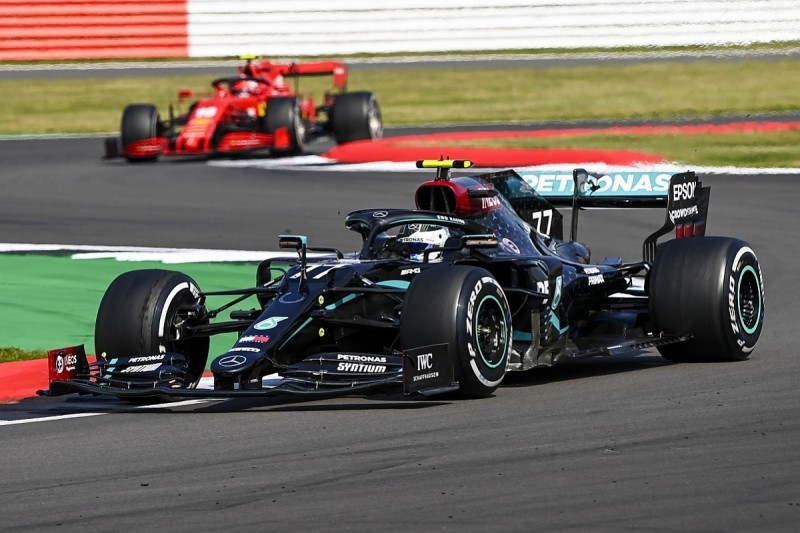
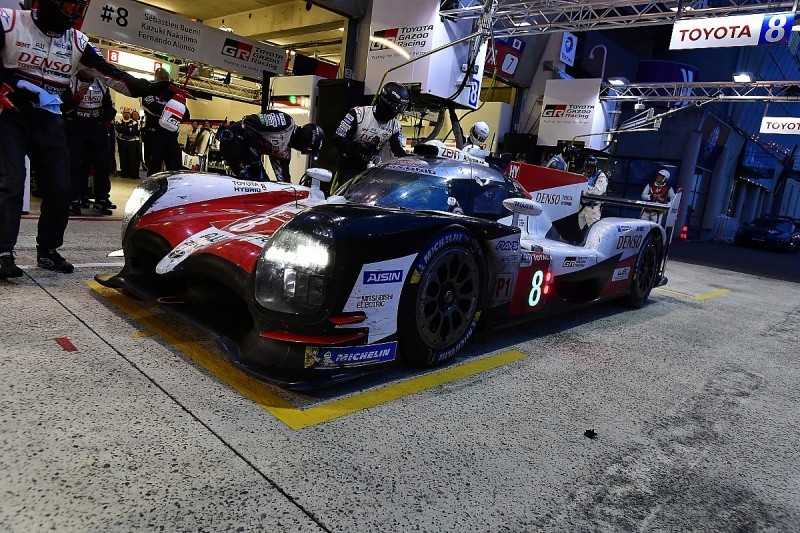
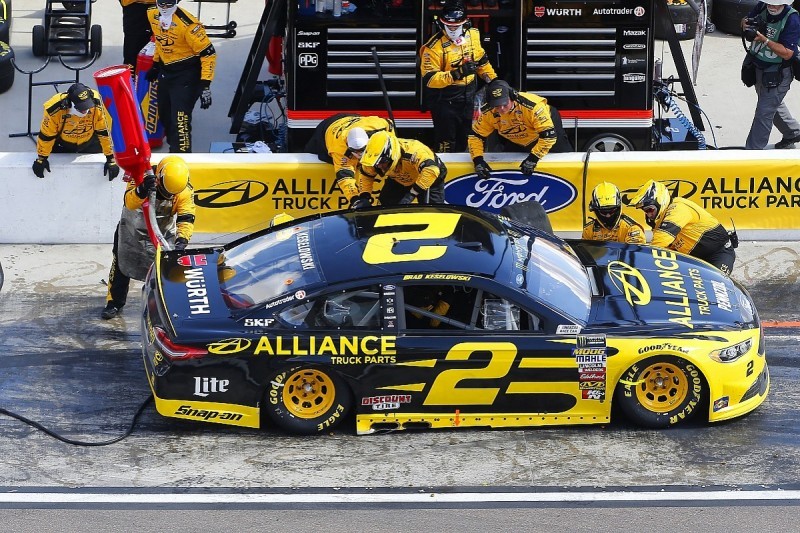
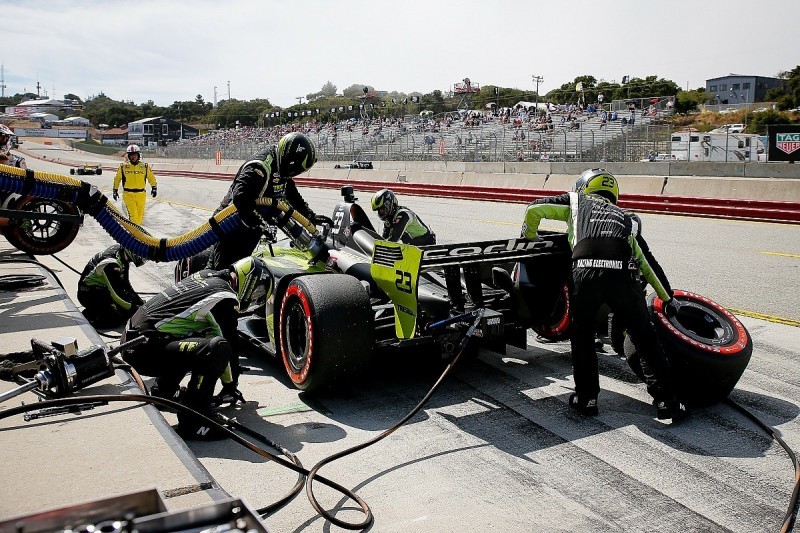

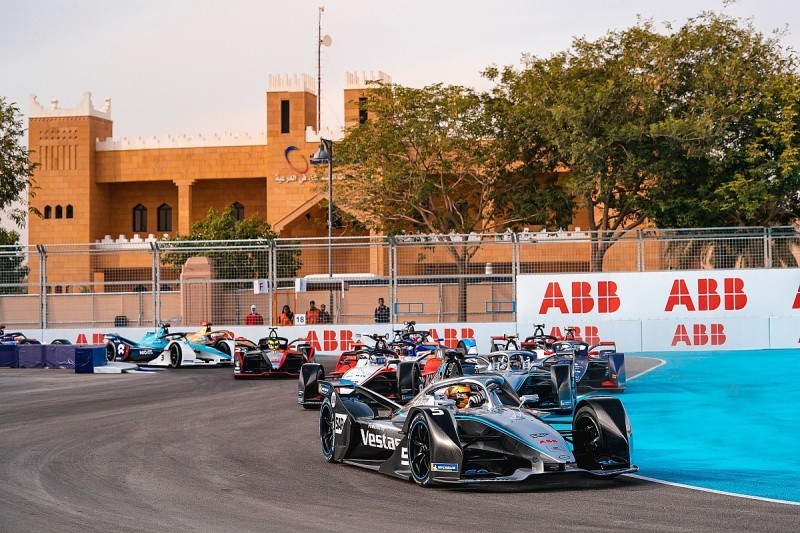
9. Detailed Look: How F1 Teams Manage Fuel
Managing fuel in Formula 1 is a complex task that requires meticulous planning and execution. Here’s a detailed look at how F1 teams approach this challenge:
9.1. Pre-Race Planning
Before each race, teams conduct extensive simulations to determine the optimal fuel strategy. These simulations take into account factors such as track layout, weather conditions, tire wear, and potential safety car periods.
9.2. Real-Time Monitoring
During the race, teams continuously monitor fuel consumption using telemetry data. This data provides real-time information about fuel flow, engine performance, and car speed.
9.3. Communication with the Driver
Engineers communicate with the driver throughout the race, providing instructions on when to save fuel and when to push. This communication is crucial for ensuring that the car can complete the race without running out of fuel.
9.4. Adjusting Strategy
Teams are prepared to adjust their fuel strategy based on changing circumstances. For example, a safety car period can allow teams to save fuel, while a sudden downpour might require a change in tire strategy that also affects fuel consumption.
9.5. Innovative Solutions
F1 teams are constantly developing innovative solutions to improve fuel efficiency. This includes optimizing engine mapping, improving aerodynamics, and developing more efficient energy recovery systems.
10. Answering Your Questions: FAQs About Fuel in F1
Here are some frequently asked questions about fuel in Formula 1, along with detailed answers to help you understand this topic better.
10.1. Why is there a fuel limit in F1?
The fuel limit in F1 is designed to encourage teams to develop more fuel-efficient engines and strategies, promoting sustainability and relevance to road car technology.
10.2. How do F1 teams measure fuel consumption?
F1 teams measure fuel consumption using sophisticated fuel-flow meters monitored by the FIA, ensuring compliance with regulations.
10.3. What happens if an F1 car runs out of fuel during a race?
If an F1 car runs out of fuel during a race, it will come to a stop, resulting in retirement from the race.
10.4. Can F1 teams add fuel during a race?
No, refueling during the race is prohibited in modern Formula 1.
10.5. How does the ERS help with fuel efficiency?
The ERS recovers waste energy from the turbocharger and braking system, allowing the car to generate additional power without using extra fuel.
10.6. What is “lift and coast”?
“Lift and coast” is a fuel-saving technique where the driver lifts off the throttle slightly before the braking zone and coasts into the corner.
10.7. How does aerodynamics affect fuel consumption?
The aerodynamic design of F1 cars creates downforce, which improves grip but also increases drag, leading to higher fuel consumption.
10.8. What is thermal efficiency in an F1 engine?
Thermal efficiency refers to the percentage of energy in the fuel that is used to propel the car. Modern F1 engines achieve over 50% thermal efficiency.
10.9. Are F1 engines more efficient than road car engines?
Yes, F1 engines are significantly more efficient than typical road car engines, thanks to advanced technology and engineering.
10.10. How is Formula E different in terms of fuel usage?
Formula E cars are powered entirely by electricity, eliminating the need for fuel and promoting sustainable racing.
11. Latest Advancements in Formula 1 Fuel Technology
Formula 1 continues to push the boundaries of fuel technology and efficiency. Here are some of the latest advancements:
| Technology | Description | Impact on Fuel Usage |
|---|---|---|
| Advanced Combustion | Optimizing the combustion process to extract more energy from each drop of fuel. | Reduces fuel consumption by ensuring more complete combustion and minimizing waste. |
| Friction Reduction | Using advanced materials and coatings to reduce friction within the engine. | Improves fuel efficiency by reducing energy loss due to friction. |
| Energy Recovery Systems | Enhancing the MGU-H and MGU-K systems to capture and reuse more waste energy. | Generates more power without using additional fuel, improving overall efficiency. |
| Sustainable Fuel Research | Exploring the use of biofuels and synthetic fuels that can reduce carbon emissions. | Offers a more environmentally friendly alternative to traditional gasoline, reducing the carbon footprint of F1 racing. |
| Aerodynamic Improvements | Developing aerodynamic components that reduce drag without sacrificing downforce. | Decreases fuel consumption by minimizing the energy required to overcome air resistance. |
| Intelligent Fuel Management | Using advanced algorithms to optimize fuel usage in real-time, based on track conditions and driver behavior. | Ensures that the car is using fuel as efficiently as possible, maximizing performance while staying within the fuel limit. |
12. Experience the Future of Automotive Information with CARS.EDU.VN
Are you finding it challenging to keep up with the rapidly evolving world of automotive technology and maintenance? Do you struggle to find reliable and trustworthy information about car services and repairs? At CARS.EDU.VN, we understand these challenges and are dedicated to providing you with the solutions you need.
We offer comprehensive guides, expert insights, and the latest news to help you stay informed. Our directory of certified repair shops ensures that you can find trustworthy mechanics, while our detailed service and repair information helps you keep your car running smoothly.
Ready to take control of your automotive knowledge and experience? Visit CARS.EDU.VN today and discover the difference.
Address: 456 Auto Drive, Anytown, CA 90210, United States
Whatsapp: +1 555-123-4567
Website: CARS.EDU.VN
Let cars.edu.vn be your trusted partner in navigating the world of automobiles, ensuring you have the information and resources you need to make the best decisions for your vehicle.